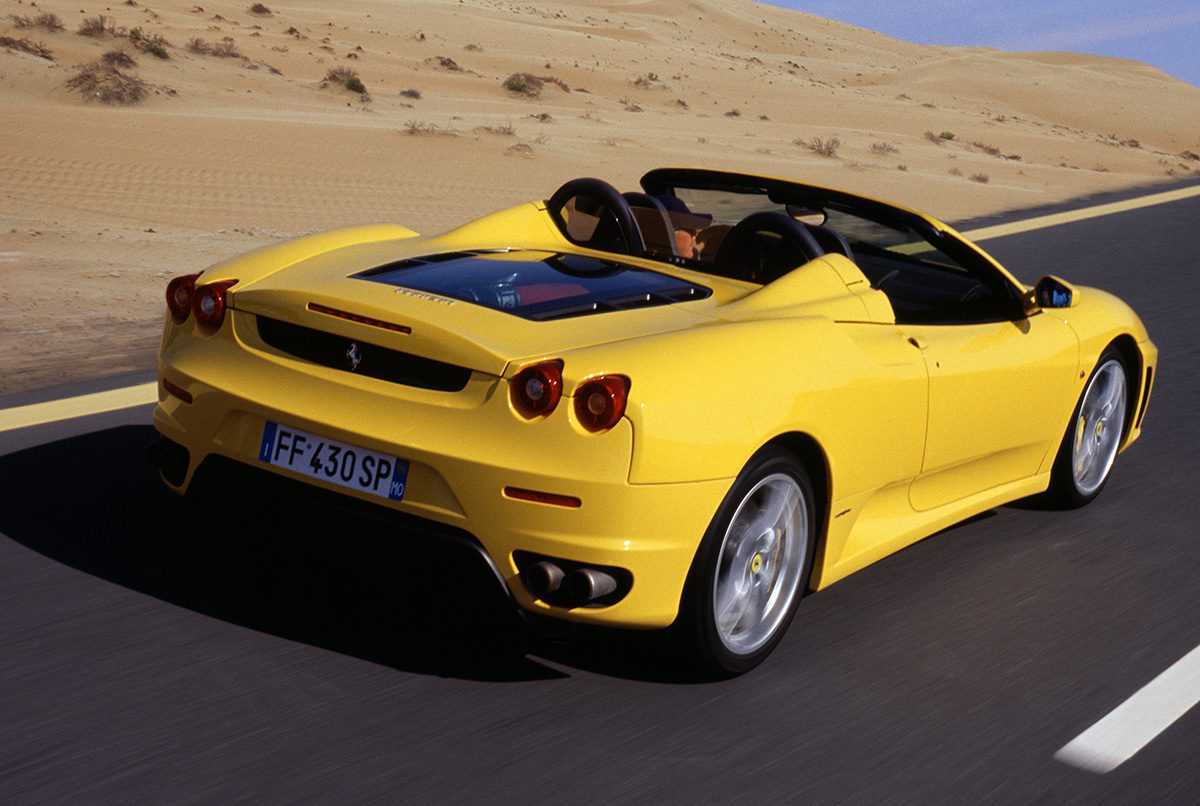
LUX Editor-in-Chief Darius Sanai tries out Michelin’s supercar tyres on his Ferrari 430 Spider to see whether they’re worth the investment
Tyres are a curiously under-explored subject when it comes to supercar optimisation and maintenance. You can have conversations all day long with fellow owners about filters, suspension geometry, engine remapping, and other arcane elements of your car’s construction that might add fractions of a second to your lap time on a circuit.
But conversations about the patches of rubber that actually transmit all the power, and handling, from the car to the road and vice versa, are frequently limited to the very basics. How big are your wheels? How wide are your tires? Are they okay to drive when they have a certain amount of tread left, or a certain age?
Follow LUX on Instagram: the.official.lux.magazine
But tyres are, as any Formula One driver knows, far more important than that. Not only are they the only point of contact between your car and the road, they also elements of your car that will never, ever be made by the manufacturer of your car. You may have a Ferrari, a McLaren, or a Lamborghini, but your tyres will always be made by third-party manufacturers.
Each manufacturer has a range of tyres optimised for types of car and driving. My Ferraris were all supplied with Pirelli P Zero tyres, with the owners’ handbooks stating that these and similar Michelin and Bridgestone tyres were all officially approved. Owners’ forums, meanwhile, were full of discussion about the latest range of Michelin tyres for supercars, the Pilot Sport 4S.

Michelin PS4S tyres
Of all my Ferraris, there is one model that has become my car of choice for a sunny, weekend high-speed drive in the countryside. The 430 Spider is the last of the line in a significant way. Certain model lines of Ferrari are celebrated for their ‘mid engines’, meaning the engine is located just behind the driver’s head, rather than under the front bonnet. They are also celebrated for their “gated manual” gearshift: a metal manual gear-lever which moves around a race-style bar metal gate, a work of art in itself. The 430 Spider is the last, and most modern, Ferrari that combines these two attributes; all mid-engined Ferraris since then have been made only with paddle-style gearshifts by the steering wheel, and no clutch pedals, like an automatic.
So the 430 Spider is a piece of history, and quite rare: a few hundred were made in right-hand drive. And it’s also tremendous fun to drive, combining a 485hp engine behind your head, no roof, sharp handling, and the opportunity to shift gear yourself. There was nothing wrong with the way it drove on its Pirelli tyres, in fact it was quite thrilling, but I decided to swap over to the new Michelins to see if they made any difference.
Read more: Investigating Vincent van Gogh’s iconic masterpiece
First thing to notice: the car rides appreciably more smoothly on the new tyres. Lumps in the road that formerly jarred now only bump. But you don’t buy a Ferrari for its comfortable ride.

Going for an enthusiastic drive, the improvements made themselves known more subtly. Previously, turning into a corner, the car felt sharp, but now that sharpness, and feel, was there all the way through each curve. It was as if there was a new channel of communication open with the road. Push harder around the corner, and the feel increased: you had a stronger sense of what the car was doing.
Modern Ferraris have a switch on the steering wheel that allows you to flick between driving modes; the F430 was the first to have this, and for enthusiastic driving I switch mine to Race. This sharpens up responses and also means the car is allowed to slide around a bit when you are driving at its limit, before the electronic systems (usually) catch the car. Pushing on, in Race mode, the car now feels more adhesive at the limit – it simply feels like it sticks to the road more. It’s not a transformation – the car always had superb roadholding – but now you feel more on the way, and can stay gripping the road longer.
Read more: 6 mountain restaurants to stir your soul this summer
I haven’t tested another of the PS4S’s supposed attributes, its wet weather grip, because I don’t take my car out in the wet; and hope not to test another of its noted qualities, its performance under emergency braking.
Normally, performance and comfort in tyres are in inverse proportion: the more comfortable the tyre, the less suited to high-speed driving, and vice versa. The PS4S (not to be confused with another Michelin tyre, the less sporty PS4) manages somehow to combine both. In terms of investing in an upgrade in your car: if you have a car worth £150,000 (or euros, or dollars) or more, spending around 1% of that on a set of new Pilot Sport 4S tyres might just be the smartest investment you make.
Find out more at michelin.com and ferrari.com







Recent Comments